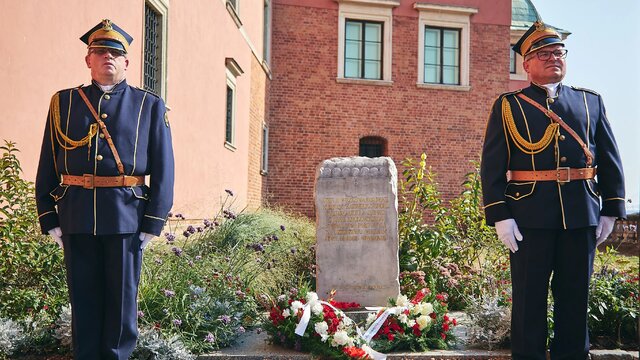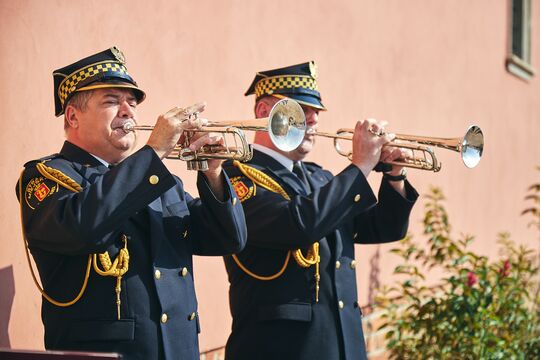17 September - a significant date for the Royal Castle in Warsaw
At 11.15 a.m. on 17 September 1939, the hands of the castle clock stopped. As a result of intensive German shelling combined with massive air raids, the Clock Tower and Władysław Tower, as well as the roof over the Senators' Hall and the wing facing the Vistula River, burst into flames. Immediately after the cannonade started, the custodian of the castle collections, Kazimierz Brokl, was killed in the rescue operation. To commemorate this tragic date, every year on 17 September the management of the Royal Castle in Warsaw, accompanied by a representation of staff and invited guests, place flowers at a symbolic pedestal at the site of the first custodian's burial.
The ceremony, which takes place as part of the ‘Custodians to Custodians’ initiative at the memorial site located at Grodzka Gate (the entrance to the Castle from Solidarności Avenue), has a long tradition, dating back to 1984.
17 September is a particularly important date in the history of both the Castle and the country as a whole. On that day in 1939, at 4 a.m., Soviet troops from the Byelorussian and Ukrainian fronts, in a force of around 1 million soldiers, crossed the eastern borders of Poland, dealing a ‘stab in the back’ to the country defending itself against invasion by the Third Reich and thus ending all hope of repelling the enemy.
Only a few hours later, in the heart of the Polish capital, the German army began intensive artillery shelling combined with massive air raids. One of the targets of the attack was the Royal Castle as the most important material symbol of Polish independence, the historic seat of the monarchical and parliamentary authorities and - since 1926 - the residence of the President of the Republic of Poland. At 11.15 a.m., which was to gain a symbolic dimension in the future, the hands of the castle clock stopped.
Although the fate of the Castle walls seemed a foregone conclusion with successive artillery salvos, and was to be finally sealed five years later, the rescue operation proved a spectacular success. The cultural treasures evacuated from the burning Castle mostly survived the war in hiding, returned to the rebuilt edifice and can still please our eye today.
Many eminent people, such as the aforementioned Prof. Stanisław Lorentz or Prof. Jan Zachwatowicz, spent years making efforts to ensure that the date of 17 September ceased to evoke only tragic memories. These efforts were not in vain, for on this day, 32 years later, the first symbolic brick was laid for the rebuilding of the Royal Castle.




